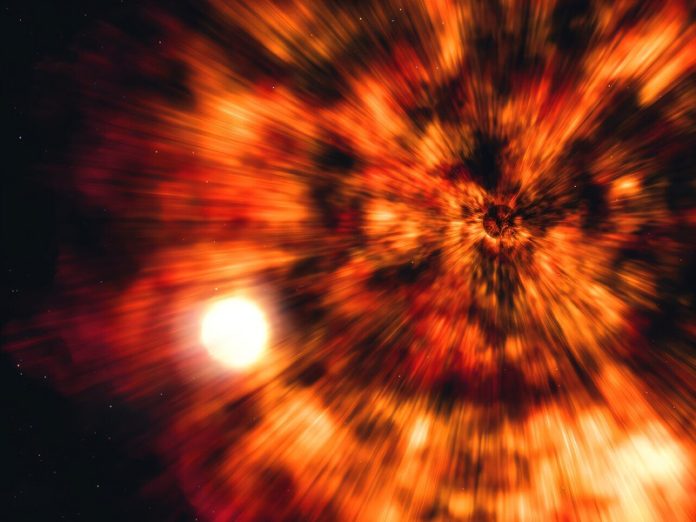
When you think of archaeology, you might picture digging through ancient ruins or exploring hidden tombs.
But scientists have now used a very different kind of archaeology—one that takes place in deep space.
Using data from NASA’s Chandra X-ray Observatory, a team of astronomers has studied the remains of a star that exploded long ago, uncovering clues about its history in what they call supernova archaeology.
The star system they studied is known as GRO J1655-40. Today, this system contains two objects: a black hole about seven times the mass of our sun, and a smaller companion star about half as massive as the sun.
But the story of how this system formed goes back millions of years.
Originally, GRO J1655-40 had two large stars orbiting each other. One of them was much bigger than the other and burned through its nuclear fuel quickly.
When it ran out of energy, it exploded in a huge event called a supernova. The outer layers of the exploded star were blasted into space—some of that debris even hit the companion star. Meanwhile, the rest of the exploded star collapsed into a black hole.
Over time, the black hole and the surviving star moved closer together, losing energy as gravitational waves—a type of ripple in space. Eventually, the black hole got close enough to start pulling matter off its companion star.
Some of that stolen material spun around the black hole in a disk. While most of it fell into the black hole, a small amount was pushed back out into space as strong winds, powered by magnetic forces and friction in the disk.
This is where the “archaeology” comes in. In 2005, Chandra observed the GRO J1655-40 system when it was shining brightly in X-rays. Using special instruments, Chandra captured detailed information about the X-ray light, revealing the presence of individual elements in the winds blowing away from the black hole.
By comparing this data with computer models of how stars explode, astronomers were able to work backward to learn about the original star that went supernova. They discovered that the destroyed star was about 25 times the mass of our sun and had more heavy elements (those heavier than helium) than our sun does.
The research team published their findings in The Astrophysical Journal under the title “Supernova Archaeology with X-Ray Binary Winds: The Case of GRO J1655−40.”
This study shows how we can use clues left behind in light to learn about stars that exploded millions of years ago. In the future, scientists hope to use this technique to study other systems and uncover more stories written in the stars.



